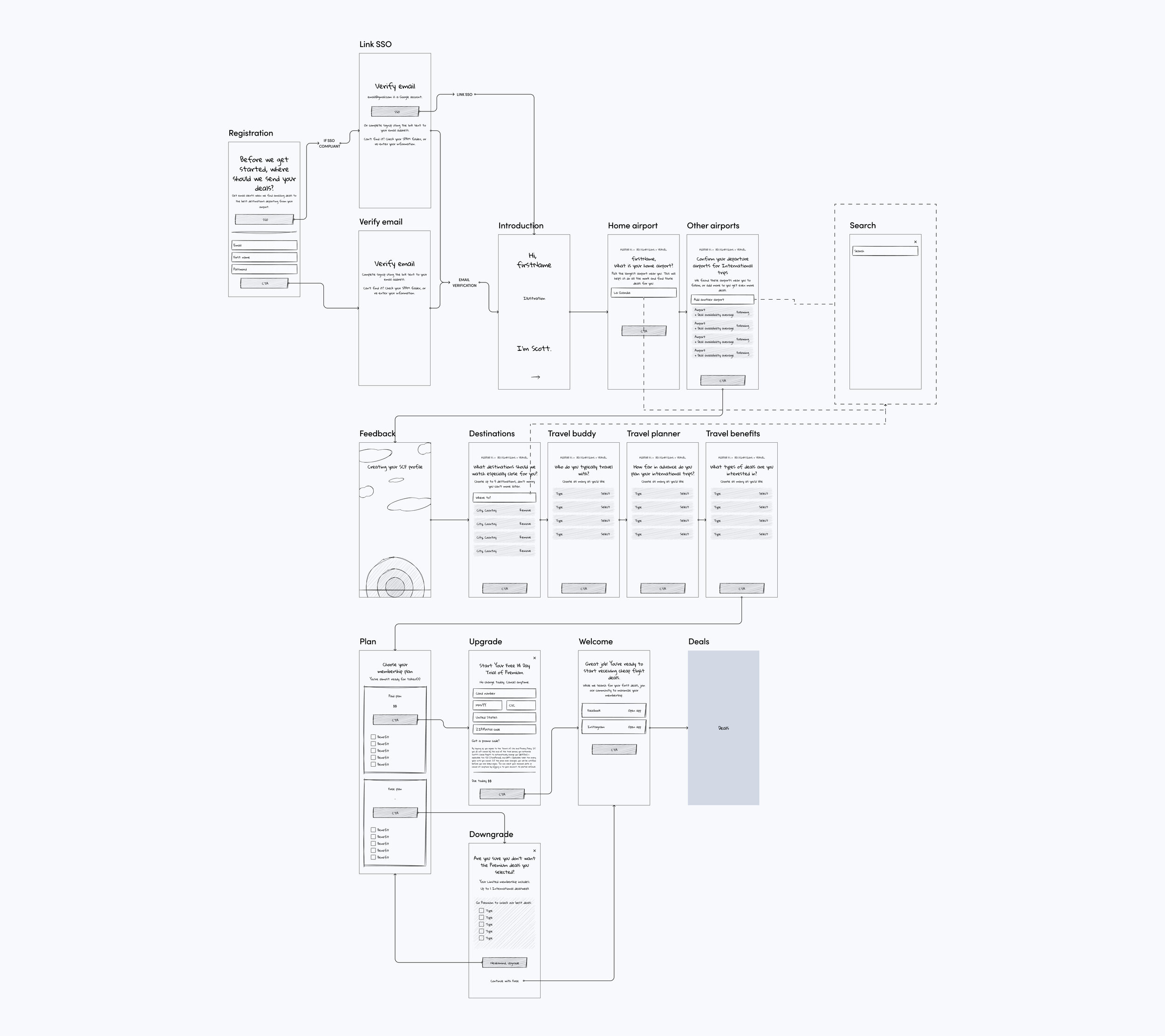Going’s
Onboarding
Onboarding users to a subscription-based service dedicated to assisting travelers in finding discounted flight deals.
UI/UX Design
Interactive Design
User Interviews
Usability Testing
As the designer responsible for research, strategy, and design, I led UX efforts to enhance the top-of-funnel customer experience, with a focus on driving growth. Our primary objectives encompassed a 5% increase in conversion, showcasing our new identity, and capturing valuable user data.
To achieve these objectives, I conducted a meticulous analysis of our onboarding data and established comprehensive research data banks. By facilitating design workshops, I fostered a collaborative environment to generate innovative ideas and solutions
A crucial aspect of our approach involved rigorous iterative testing of the new customer experience with our existing user base. This enabled us to gather crucial feedback and insights to refine the design and ensure it aligns with user needs and preferences.
In addition to my core responsibilities, I actively contributed to product management, fostering cross-functional collaboration and ensuring seamless integration between design and other product-related activities.

Approach ✨
Problem
After conducting user research, analyzing data, and comparing more than 20 product onboarding flows, we developed an initial hypothesis that cancelation rates might be linked to a lack of product education. Here's what we discovered:
Churned users exhibited a pattern of active days preceding their cancellation and trends for cancellation reasons.
We observed that trial conversion rates increased when users subscribed to three or more airports, suggesting a positive impact on their decision to continue using the product.
Another significant finding was that trial conversion rates saw an increase when users received deals or offers during the onboarding process, indicating the persuasive influence of such incentives.
Hypothesis
To address the issue of high cancellation rates, our team formulated a hypothesis centered around enhancing user education during onboarding. We hypothesized that by implementing a conversational onboarding flow and adopting a straightforward form of interaction, we could effectively educate users about the product, leading to increased retention rates.
We ran multiple A/B experiments and usability tests with new flows that employed conversational elements, fostering a more engaging and informative experience for users. Additionally, we incorporated paths within the flow to collect qualitative user data, allowing us to gain deeper insights into user preferences and pain points. With these experiments, we anticipated that users would have a better understanding of the product, leading to improved retention rates and reduced cancellations during the onboarding phase.
In order to mitigate cancellations, we introduced a pause membership feature, enabling users to temporarily suspend their subscriptions instead of canceling outright. This aimed to provide users with a viable alternative and reduce the likelihood of immediate cancellations.
Results
We gained a deep understanding of our travelers’ goals, motivations, and expectations.
By focusing on real-user insight and data we increased brand trust, brought delight, and gave new users a motivation to subscribe to the service.
The new onboarding flow successfully guided users through the conversion process and led to a higher number of users taking the desired actions (e.g., signing up, selecting airports, and making a purchase).
We saw a significant difference in conversion with a 21% increase.
Solution


